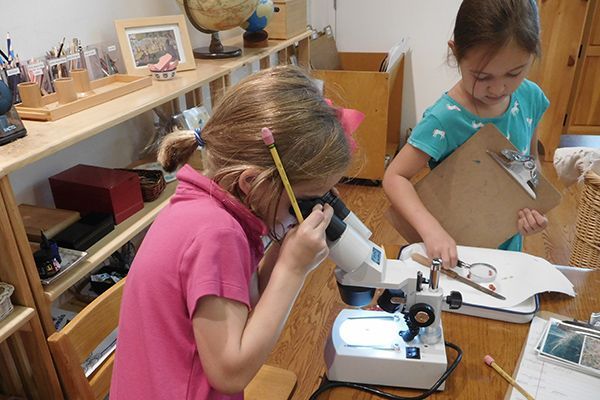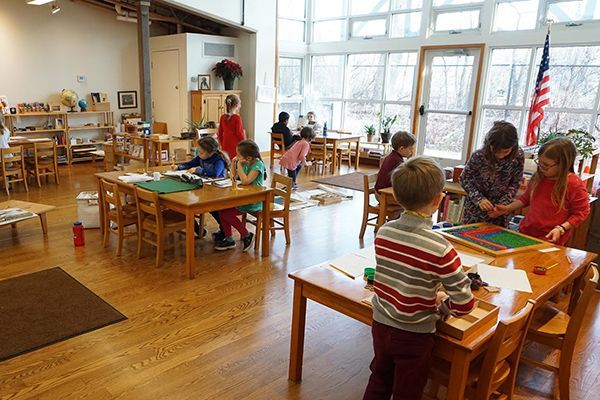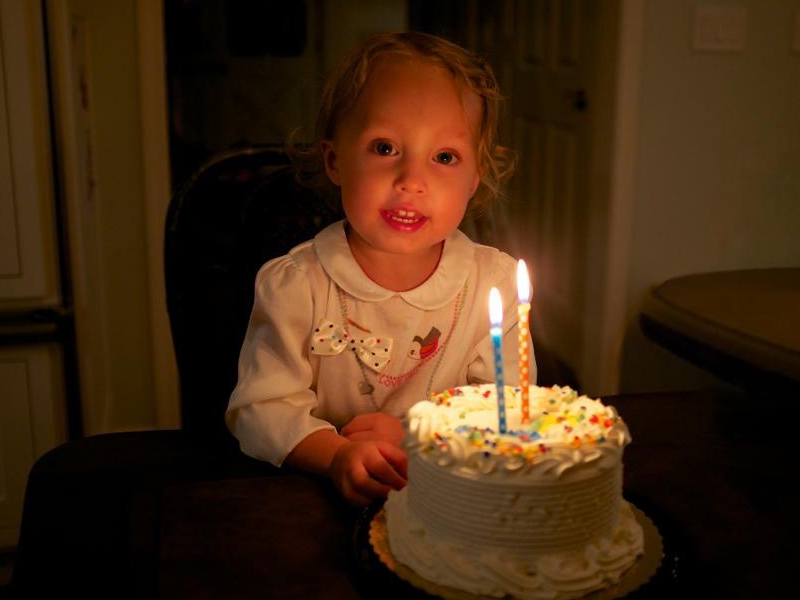
I love finding ways that Montessori’s educational approach inherently addresses human needs. When I look at books espousing the best ways to teach, the best ways to conduct business, or the best ways to be healthy, I usually find that the Montessori approach already incorporates the recommended practices—and always in an integrated, natural way. The Forest Bluff Directors and I are witnessing this once again while reading our latest teacher group discussion book at Forest Bluff, The Innovator’s DNA: Mastering The Five Skills of Disruptive Innovators, by Jeff Dyer, Hal Gregersen, Clayton M. Christensen. In today’s world, the ability to innovate is key to solving problems large and small. I would argue that it has always been important for human survival and progress, but it has become a more urgent need, and now it’s a buzzword for educators.
The aforementioned authors explain that to create something new—to innovate—a person needs to associate (connect ideas), network with others (socialize), observe (reflect), question (lead with your curiosity), and experiment (be unafraid to try things and fail). In the Montessori approach, you can see how these practices, or habits, are all actively encouraged and cultivated. Each of these important aspects of innovating are worked into the educational approach seamlessly. Dr. Montessori was simply following what made sense for optimal human development.
For one example, Montessori education has captured an essential key to children’s learning: presenting the world in context, from the whole to the parts, with a deliberate, ongoing opportunity for children to associate topics, themes, and details of information. Associating is a crucial skill. Montessori’s approach creates habits in children’s thinking that prepare them for a life of innovative creativity and problem solving by constantly encouraging them to associate.

Why Mental Association Matters
The Innovator’s DNA emphasizes the importance of associating for sparking innovative ideas. This is when we connect things we’ve seen, heard, and experienced, to imagine and create something new. Any original idea is only made possible by exposure to many diverse ideas and the foundation of knowing how to recognize connectivity.
A great example in the book is the way that Steve Jobs created the laptop computer. His experience with meditation taught him how important silence is for concentration, so he sought ways to eliminate the loud fans that all computers had up to that point. To accomplish this, Jobs reduced the size of the processor—the engine—in his computer so that it would not generate so much heat (thus eliminating the need for the louder fan). In this way, he created the quiet laptop computer that Apple became known for. In another example, Jobs thought back to his past experience of taking a calligraphy class at Reed College, and realized that enabling people to use different fonts on their computers would give them the artistic satisfaction that we all experience today when, by simply pushing a button, we can change all our text into various fonts. There are other examples of where Jobs connected his experience in one area of his life to another in order to solve a problem in new ways. This is what we call associating. With practice, it becomes a way of thinking.
Montessori Supports Associative Thinking
In Montessori, we cultivate this human ability in several ways. To begin with, the curriculum—everything the children are going to study—is out on the shelves in consistent locations so that children can see the “whole” of their education in front of them, every day. This encourages them to see connections with an orienting framework of information in their minds. As the children reach their elementary years, much of what they will study is abstract and original, but the associations the children envision are still supported by this physical layout. This physical layout presents the diversity of topics.

The authors of The Innovator’s DNA tell us, “Innovative ideas flourish at the intersection of diverse experience” (p. 45). In a well-functioning Montessori classroom, children are exploring a variety of activities at any one given moment, and that makes a room full of diverse topics. As a child crosses the room, he might pass a friend working with a puzzle map of Africa, another with Stamp Game Division, a third reading Phonogram cards, another tracing a Metal Inset of a hexagon, a child saying the Botany Cabinet leaf shapes out loud, one practicing the multiplication facts finger chart, another writing a story with the Movable Alphabet, someone meditatively pouring water, and a child composing a piece of music on the bells. This child’s mind will be filled with ideas, images, and sounds from this array of information. By having individual interests, the students expose one another to different topics. This creates a natural cross-pollination of ideas. From such experiences, a child will make original connections between topics, maybe even later when he is thinking, trying to create something new, or solving a problem of his own.

Time to Reflect and to Associate
In the day’s schedule in a Montessori classroom, there is a three-hour period of uninterrupted work, then the children eat lunch together, they play outside together, they read together, and so on. In short, they are with their teacher and peers all throughout the day in different activities, which invites them to continue ongoing conversations that connect topics and experiences. The teacher can point out, “Oh your sandwich is a square, just like the square in the geometric cabinet you worked with today!” More often than not, it is the children themselves who make such connections and announce them. You might hear a child burst out with enthusiasm, “My sandwich is a SQUARE!” Such opportunities for discovery make associating joyful. Often, what follows are responses from other children hearing such comments; they then make their own associations. One might say, “And that is a triangle,” looking up at the support beams on the outside of Forest Bluff’s school building, which children can see from the windows while eating lunch. Free associating is made possible by long stretches of the school day when students are not only allowed to talk with one another, but encouraged to do so. Because silence is not imposed for the children to listen to a teacher lecturing or to watch an instructional video, and because children are not interrupted from their flow of thought, associating is a constant, synergetic, and collaborative experience in a Montessori setting. This is just one of the many ways that Montessori prepares our children for life!
Additional Reading
To read more about how particular habits of thinking are fostered in Montessori classrooms, please see our previous blogs and future blogs:
Developing Courage
Adolescents Find Strength in Nature and Community
Returning to School with Resilience, Creativity, and Courage
How Montessori Fosters Curiosity and Courage
Cultivating Curiosity
How Montessori Fosters Curiosity and Courage
Not Fearing Failure
In Pursuit of the Correct Answer: The Role of Process and Discovery in Montessori
Learning to Love Effort: How Montessori Fosters Perseverance
How Montessori Education Prepares Children For Life Beyond School
Internal Organization
What’s So Great About the Great Lessons?
Developing Inner Order: How We Can Help Our Children
Routines at Home


